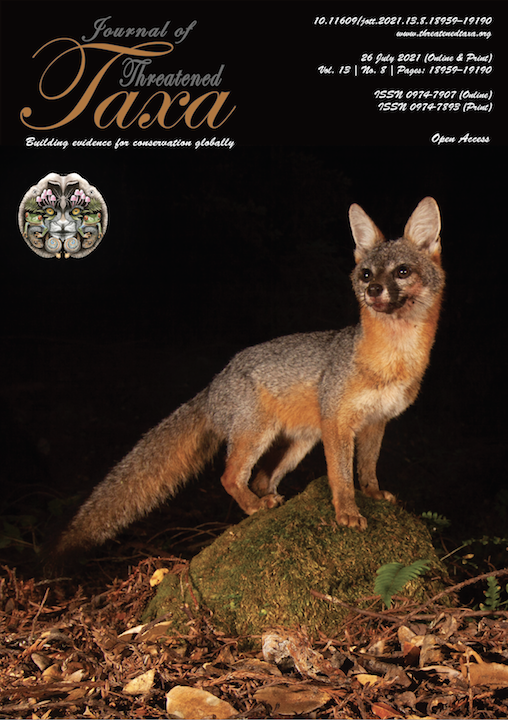Occurrence of vivipary in Ophiorrhiza rugosa Wall. (Rubiaceae)
Main Article Content
Abstract
Vivipary is a rare reproductive strategy, has been reported less than 0.1% of angiosperms. The present observation confirms the incidence of true vivipary in medicinally important species Ophiorhiza rugosa Wall. (Rubiaceae) from hill station of Karbi Anglong district of Assam.
Article Details

This work is licensed under a Creative Commons Attribution 4.0 International License.
Authors own the copyright to the articles published in JoTT. This is indicated explicitly in each publication. The authors grant permission to the publisher Wildlife Information Liaison Development (WILD) Society to publish the article in the Journal of Threatened Taxa. The authors recognize WILD as the original publisher, and to sell hard copies of the Journal and article to any buyer. JoTT is registered under the Creative Commons Attribution 4.0 International License (CC BY), which allows authors to retain copyright ownership. Under this license the authors allow anyone to download, cite, use the data, modify, reprint, copy and distribute provided the authors and source of publication are credited through appropriate citations (e.g., Son et al. (2016). Bats (Mammalia: Chiroptera) of the southeastern Truong Son Mountains, Quang Ngai Province, Vietnam. Journal of Threatened Taxa 8(7): 8953–8969. https://doi.org/10.11609/jott.2785.8.7.8953-8969). Users of the data do not require specific permission from the authors or the publisher.
References
Cota-Sanchez, J.H. (2004). Vivipary in the Cactaceae: Its taxonomic occurrence and biological significance. Flora - Morphology Distribution Functional Ecology of Plants 199(6): 481–490. https://doi.org/10.1078/0367-2530-00175
Farnsworth, E. (2000). Ecology and Physiology of Viviparous and RecalcitrantSeeds. Annual Review of Ecology and Systematics 31: 107–138. https://doi.org/10.1146/annurev.ecolsys.31.1.107
Gharpure, G., B. Chavan, U. Lele, A. Hastak, A. Bhave, N. Malpure, R. Vasudeva & A. Patwardhan (2010). Camptothecin accumulation in Ophiorrhizarugosa var. prostrata from northern Western Ghats. Current Science 98(3): 302–304.
Hsiang, Y.H., R. Hertzberg, S. Hecht & L.F. Liu (1985). Camptothecin induces protein-linked DNA breaks via mammalian DNA topoisomerase I. Journal of Biological Chemistry 260(27): 14873–14878.
Vineesh, V.R., P.V. Fijesh, C.J. Louis, V.K. Jaimsha & J. Padikkala (2007). In vitro production of camptothecin (an anticancer drug) through albino plants of Ophiorrhizarugosa var. decumbens. Current Science 92(9): 1216–1218.

